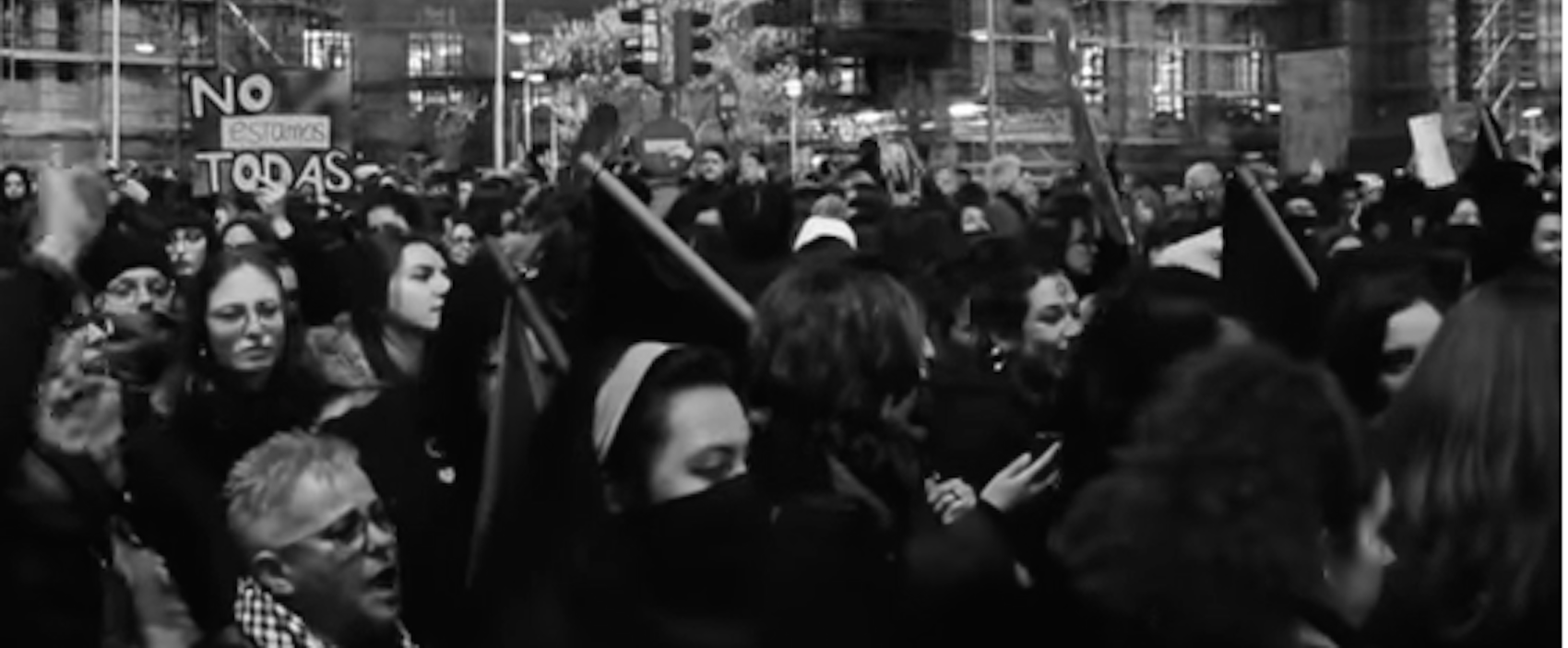There were two events on International Women’s Day last month that stood out. One was the women’s strike in Spain when hundreds of thousands of women took to the streets and withdrew their labour. Another was a letter from women taking part in a hunger strike in protest against their detention at Yarl’s Wood who wrote that although they wished they could join the celebrations, they were not free to do so.
We women here in Yarl’s Wood did not anticipate our freedom would be taken from us or the impact it would have. We are on a hunger strike because we are suffering unfair imprisonment and racist abuse in this archaic institution in Britain. This is a desperate measure due to desperate circumstances. We feel voiceless, forgotten and ignored. We needed a voice and more importantly we needed someone to listen. We needed to be reminded that we are human beings because trust us when we say most of us are so dehumanised by this process of detention and the way we are treated in detention that you start to forget.
Reading this letter made me think about all the women who would not be free to take part in a march like the one in Spain – those with no jobs, or the women whose work situation was too precarious, the women in prison, women who live in the countryside, the women who feel excluded for reasons of race or background, those whose husbands or partners abuse them and for whom taking part would be too risky.
So while the footage of the women’s marches was undoubtedly heart-stopping, exhilarating, emboldening and although from what I know Spain’s women’s movement is working to extend to the far reaches of Spanish society, the underlying tension I felt about the protests and the letter from Yarl’s Wood remained. More recently, a reflection on Sadie Smith’s essay “Dance Lessons for Writers” and what the latter has taught her about her craft on the always-good-to-read Brainpickings spoke to the small niggle in my thoughts.
Smith’s essay begins by exploring the “lessons of position, attitude, rhythm and style, some of them obvious, some indirect” that studying dance has yielded. A quote by Gene Kelly in which he claims that Fred Astaire “represents the aristocracy” while he represented “the proletariat” leapt out. While the power imbalances between the two require some thought, thinking about dance in this way helped me think through some of the tensions between those two expressions of International Women’s Day.
Astaire, writes Smith “when moving always appeared elevated, to be skimming across whichever surface: the floor, the ceiling, an ice-rink, a bandstand” whereas Kelly’s “center of gravity was far lower: he bends his knees, he hunkers down”.
Kelly, writes Smith
is grounded, firmly planted, where Astaire is untethered, free-floating. Likewise, the aristocrat and the proletariat have different relations to the ground beneath their feet, the first moving fluidly across the surface of the world, the second specifically tethered to a certain spot: a city block, a village, a factory, a stretch of fields.
In writing, Smith says, she feels “there’s usually a choice to be made between the grounded and the floating” and – as the blogs author Maria Popova explains – goes on to examine a variety of other dancers and the different choices they represent: Prince vs. Michael Jackson, Janet Jackson vs. Madonna vs. Beyoncé, Rudolf Nureyev vs. Mikhail Baryshnikov and finally, David Byrne and David Bowie, who opened up:
The art of not dancing — a vital lesson. Sometimes it is very important to be awkward, inelegant, jerking, to be neither poetic nor prosaic, to be positively bad. To express other possibilities for bodies, alternative values, to stop making sense.
Smith then turns to how both Bowie and Byrne, in exploring different forms of dance, developed new expressions of them, an idea which raises questions of appropriation and who gets to do the stealing, but also potentially opens up conversations about how we approach the other and allow ourselves to be influenced and changed by them.
People can be too precious about their “heritage,” about their “tradition” — writers especially. Preservation and protection have their place but they shouldn’t block either freedom or theft. All possible aesthetic expressions are available to all peoples — under the sign of love. Bowie and Byrne’s evident love for what was “not theirs” brings out new angles in familiar sounds. It hadn’t occurred to me before seeing these men dance that a person might choose, for example, to meet the curve of a drum beat with anything but the matching curving movement of their body, that is, with harmony and heat. But it turns out you can also resist: throw up a curious angle and suddenly spasm, like Bowie, or wonder if that’s truly your own arm, like Byrne.
Dancers like Astaire maybe remind us that we need jubilant, sky-blazing movements and to enjoy beauty for beauty’s sake, just as we need exultant celebrations that take us onto the streets. But such forms are diminished if no heed is paid to the others, and one form comes to dominate with the assumption that it’s the only way to dance. The voices of hunger striking women in Yarl’s Wood who find themselves up against a punitive immigration system and deportation at a moments’ notice need also to be heard. How do we shape a women’s movement that takes heed of those women who aren’t free to join the dance, and as we do so, create new spaces, new connections and ways of moving and being? A movement that takes heed of Audre Lorde’s words: “I am not free while any woman is unfree, even when her shackles are very different from my own.”
